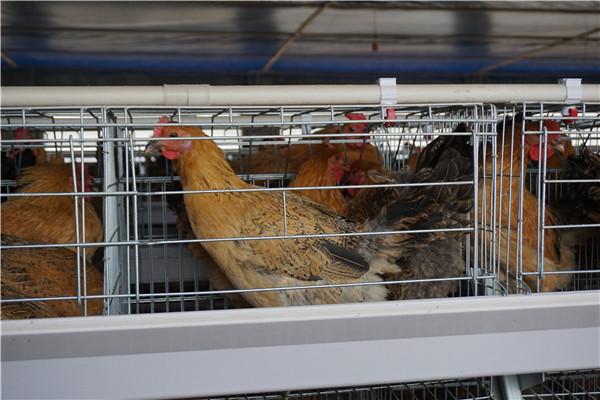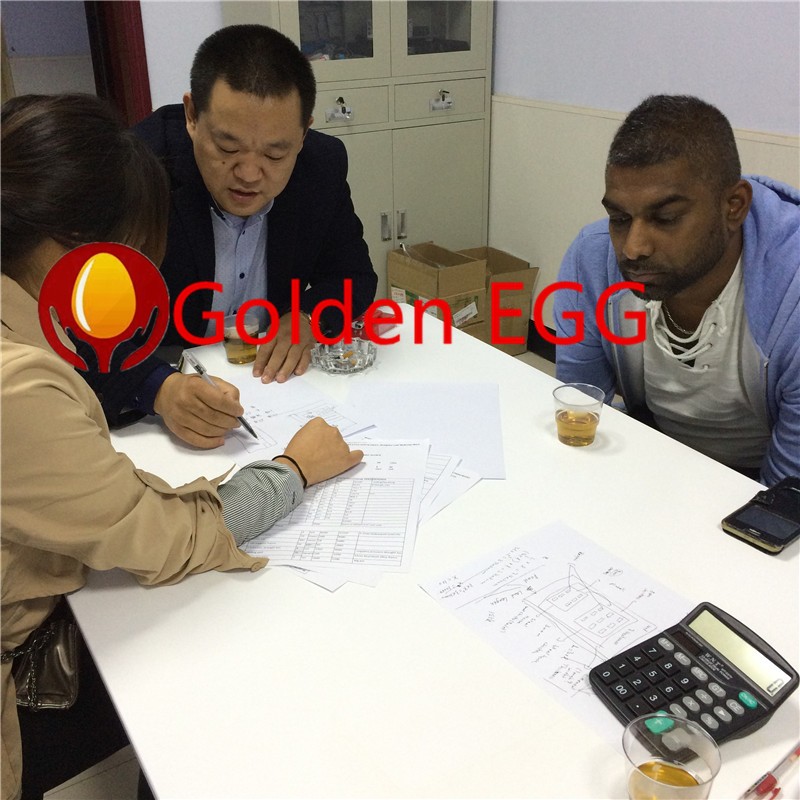With the promotion of chicken industry mechanization throughout the country, ladder-type egg-raising equipment and stacked layer cages have been improved and promoted, and the level of mechanization has been greatly improved and improved, while other types of cages have gradually been marketed. Eliminated. In the current industry, semi-stepped styles are also called stepped or A-type cages, and stacked styles are also called overlapping or H-type cages.
The semi-stepped cage has certain advantages in ventilation and lighting, and the equipment can realize the combination of mechanical automation and manual operation, so it can also deal with emergencies such as power outages. The stacked cages have a significant effect on breeding density. Its superiority, with the improvement of rural power facilities and the development of automation equipment, has also been widely used.

At present, the common stepped egg cage forms: the angle between the bracket bracing and the ground is reduced to 650-750. The larger central area of the cage system facilitates the vertical and vertical flow of the air, so the ventilation effect is better; the lower cages are offset more outwards in the vertical direction, so that the chickens in the next two cages more fully reach the aisle. Light source, so the lighting effect is good. Remove the shroud from the top of the middle cage cage. The overlap of cages in the vertical direction is only 1/3 of the depth of the cage, and 1/3 of the cage near the front net is the feeding area for chickens. The possibility that chickens will produce droppings of feces in this area will fall to the lower layer. Smaller, a small amount of feces will fall off the front of the cage block, so do not need to install the dung.
The cage type is the same. As the lower layer is not installed with a shroud plate, the top net of the middle and lower layer cages can be designed to be horizontal, so that the chicken cages in each layer are exactly the same, which leads to the standardization of the cage net and the assembly of the cage system. Since the 1970s, China introduced mechanized technology and equipment for caged laying hens. By the 1990s, the model of large-scale caged laying hens has been rapidly promoted. After the reform and opening up, China’s mechanized broilers started to develop and mature, and livestock and poultry breeding Equipment and related environmental control technologies have made progress, such as nipple drinking water equipment, automatic feeding equipment, wet curtain evaporation cooling equipment, livestock large fan and vertical ventilation equipment. There have emerged such ethnic enterprises as Yankee and Guangxing that can produce a full range of automated chicken-raising equipment. Today, the intensive, large-scale, and mechanized farming industry has contributed its own strength.
Egg cage equipment mainly consists of cage system, feeding system, drinking water system, lighting system, waste disposal system, automatic egg collection system, and environmental control system. Mechanized egg cages can be used to cycle production from hatching, brooding to the final commercial chicken or commercial eggs. Most of the houses are closed or semi-enclosed, and the automatic climate control system is used to control the microclimate and lighting in the house, so that the house can be balanced throughout the year and achieve high degree of mechanization and automation. Under this mechanized farming method, the breeder can automatically complete the feeding of chickens, the collection of eggs, the removal of feces, the ventilation and ventilation, the temperature and humidity in the house, the light intensity time, the spraying of disinfectant and the Add soluble drugs to drinking water.

























